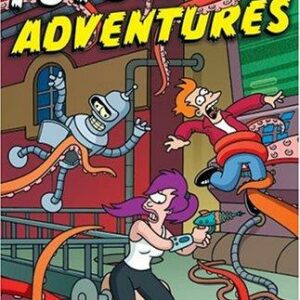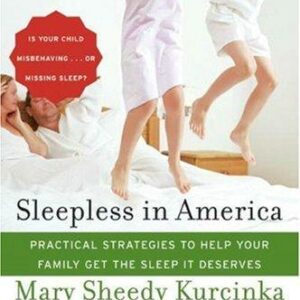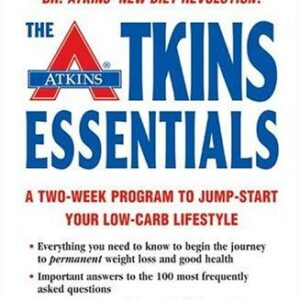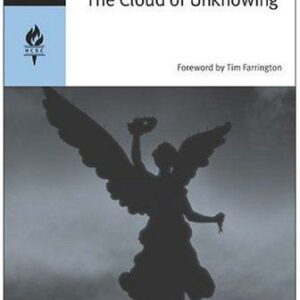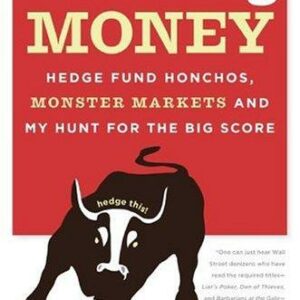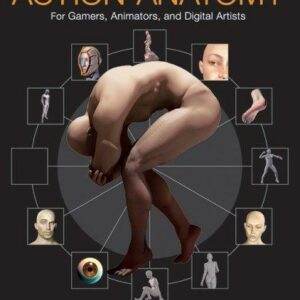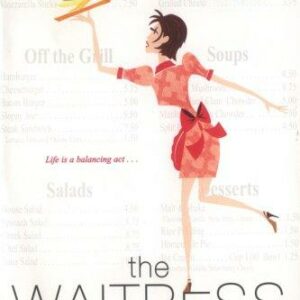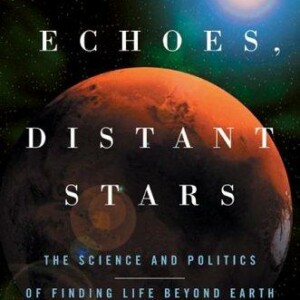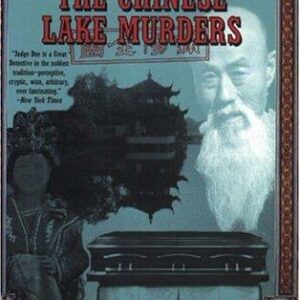Tales of Two Cities
$17.00
| Title | Range | Discount |
|---|---|---|
| Trade Discount | 5 + | 25% |
- Description
- Additional information
Description
Thirty major contemporary writers examine life in a deeply divided New York
In a city where the top one percent earns more than a half-million dollars per year while twenty-five thousand children are homeless, public discourse about our entrenched and worsening wealth gap has never been more sorely needed. This remarkable anthology is the literary world’s response, with leading lights including Zadie Smith, Junot Díaz, and Lydia Davis bearing witness to the experience of ordinary New Yorkers in extraordinarily unequal circumstances. Through fiction and reportage, these writers convey the indignities and heartbreak, the callousness and solidarities, of living side by side with people of starkly different means. They shed light on the subterranean lives of homeless people who must find a bed in the city’s tunnels; the stresses that gentrification can bring to neighbors in a Brooklyn apartment block; the shenanigans of seriously alienated night-shift paralegals; the trials of a housing defendant standing up for tenants’ rights; and the humanity that survives in the midst of a deeply divided city. Tales of Two Cities is a brilliant, moving, and ultimately galvanizing clarion call for a city—and a nation—in crisis.“A bristling portrayal of New York in the tradition of Jacob Riis.” —Guernica
“Conveys the reality of today’s economic inequality in ways that an academic tome simply can’t.” —FeministingJohn Freeman is a former president of the National Book Critics Circle and was editor of Granta until 2013. He has written for the New York Times Book Review, the Los Angeles Times, the Wall Street Journal, and the Guardian (London).
PENGUIN BOOKS
An imprint of Penguin Random House LLC
375 Hudson Street
New York, New York 10014
penguin.com
First published in the United States of America by OR Books 2014
Published in Penguin Books 2015
Copyright © 2014 by the various authors
Penguin supports copyright. Copyright fuels creativity, encourages diverse voices, promotes free speech, and creates a vibrant culture. Thank you for buying an authorized edition of this book and for complying with copyright laws by not reproducing, scanning, or distributing any part of it in any form without permission. You are supporting writers and allowing Penguin to continue to publish books for every reader.
Illustrations by Molly Crabapple
Page 271 constitutes an extension of this copyright page.
ISBN 978-0-698-40830-2
Title Page
Copyright
Dedication
Introduction • JOHN FREEMAN
Due North • GARNETTE CADOGAN
Options • DINAW MENGESTU
Every Night a Little Death • PATRICK RYAN
Miss Adele Amidst the Corsets • ZADIE SMITH
Near The Edge Of Darkness • COLUM MCCANN
The Children Suicides • MARIA VENEGAS
Partially Vacated • DW GIBSON
Four More Years • JONATHAN DEE
So Where Are We? • LAWRENCE JOSEPH
Round Trip • AKHIL SHARMA
Aliens of Extraordinary Ability • TAIYE SELASI
The Baffled Courtier: Lorenzo Da Ponte in America • EDMUND WHITE
Quid Pro Quo, Just As Easy As That • JEANNE THORNTON
Introduction • DAVE EGGERS
Park Slope Livin’ • CHAASADAHYAH JACKSON
One, Maybe Two Minutes from Fire • TÉA OBREHT
Service/Nonservice: How Bartenders See New Yorkers • ROSIE SCHAAP
A Block Divided Against Itself • SARAH JAFFE
Starting Out • JUNOT DIAZ
Engine • BILL CHENG
The Sixth Borough • JONATHAN SAFRAN FOER
Mixed Media, Dimensions Variable. • MICHAEL SALU
First Avenue & Second Street • HANNAH TINTI
Zapata Boulevard • VALERIA LUISELLI
Home • TIM FREEMAN
Introduction to Small Fates 1912 • TEJU COLE
Small Fates 1912 • TEJU COLE
Seeking • VICTOR LAVALLE
If the 1 Percent Stifles New York’s Creative Talent, I’m Out of Here • DAVID BYRNE
Traveling from Brooklyn • LYDIA DAVIS
Walt Whitman on Further Lane • MARK DOTY
Contributors
Acknowledgments
This book is for my brother Tim, who lives in both cities.
Introduction
JOHN FREEMAN
SEVERAL YEARS AGO, I bought an apartment in Manhattan with an inheritance passed to me from my grandmother, who was the daughter of a former attorney for Standard Oil. She outlived three husbands and managed her money well, and in one fell swoop from beyond the grave hoisted me out of one social class and into another.
Meanwhile, on the other side of town, my younger brother was living in a homeless shelter.
He was not far away—less than a mile. It was the second or third shelter he’d been in after moving to the city. It’s awkward enough, in most instances, to talk about money, but doubly so when it involves family. So let me just briefly say that my brother had not been left out of his inheritance; he just had no immediate access to it due to the fact that he has a mental illness. He has dealt with this illness bravely and takes precautions to manage his condition. One of the first things he did after moving to New York was check in at a hospital and use his Medicaid card to get his prescriptions.
Still, it was a very bad idea for him to move to the city. From afar, the decision felt like a car crash you watch in slow motion. We’d warned and pleaded, even begged him not to move to New York, my brother, father, and I did. My father told horror stories from when we lived here in the 1970s. I talked about how hard it could be just to sleep on some nights, with the heat, the noise, the city’s constant pulsing. My older brother talked to him about how difficult it was to find work, something my younger brother knew because he had been applying for jobs for over a year. Counselor, technological writer, librarian’s assistant, anything to do with words that paid better than minimum wage. He held a BA and had been published in newspapers.
None of that mattered in the end. He couldn’t get a job, and felt he couldn’t stay where he was—Utica—so he got on a train to New York and checked himself into a shelter. He had almost no belongings. He’d given them away or sold them. He brought a suitcase, a laptop he slept with so it wouldn’t be stolen, and a pay-as-you-go cell phone. These are luxuries in many parts of the world, but I assure you they were the thin string holding my brother’s life together by giving him a tenuous connection to the outside world, not to the one right around him. He kept us abreast of his movements by Facebook: which shelter he’d been kicked out of for fighting or calling people names, where he’d slept—the Staten Island Ferry, a bathroom at a bus station in Albany. Eventually, he wound up at this final shelter, and it was, to some degree, a last resort, where he lived for a while and joined their job-training program.
All the time that my brother was homeless, I never invited him over to where I lived or let him into my apartment. I love my brother. He can be sweet and very funny; he is gentle and kind to older people. Even when he made less than $10,000 a year, he spent hours each week tutoring and teaching people English. He is one of the most intelligent people I know, and every time I see him I am reminded how lucky I am to have him as a brother. I am also reminded how lucky I am that I was born, for reasons I cannot fathom, with a slightly different gene structure, one that means that I thrive under the same stress that makes his life impossible. It is not fair, but long ago I decided I would not spend my time trying to ameliorate the difference in our fortunes by fighting battles I knew are not winnable, among them trying to sort out his accommodation. I have had the experience of sharing a home with my brother and have arrived at the conclusion that it is better for us to live apart. During this time my girlfriend and I were contemplating conjoining our two adjacent apartments, and my feelings of guilt did not trump my resolve to avoid putting the relationship with my partner at risk from the strain of taking him in. I had seen the stress it had caused my parents. I knew my brother would be aware of the problems he was creating, and that it would be bad for him, too. At least that’s what I told myself.
So we communicated by Facebook and traded e-mails and once or twice met for lunch at a diner, where he arrived looking hollow and yet more alive than I had seen him in years. I almost didn’t recognize him. He had been walking everywhere and the food in the shelter was so bad, he’d lost forty pounds. He didn’t look sad anymore, but more like the brother I grew up with in California who was handsome and had girlfriends, a golden boy. He had much more energy now, too, as a result of being more fit, and deployed it wrangling the city’s social services bureaucracy. He had applied for a low-income housing program, and sent out resumes to jobs at the library. In the meantime, he was working up in Harlem, handing out free newspapers at the entrance to a subway. I realized in talking to him that to give him a lifeline to my house would have been a mistake; as hard as it was, he wanted to prove to us, and most important, to himself, that he could do this on his own. Still, I felt compelled to give him a few hundred dollars and he walked back into his life.
I couldn’t have predicted it then, but he succeeded. My brother got out of the shelter. He was accepted into the housing program, found an apartment, and, for a while, achieved his dream. He was living in New York, on his own. At first, he loved his new life. But as time went by, with his benefits package constantly under threat, he became increasingly tired of the strain of the city—the way it makes everything difficult, doubly so if you need help from it. Eventually he moved back to Utica and then on to Dallas, where he seems truly happy now. It’s warm, he has a car and things to do. He can live with a degree of peace and a lack of stress, and even if he has become a Republican, I still love him. I often like his photographs on Facebook.
I haven’t resolved how I feel about his time in New York. I don’t think I ever will, because the juxtaposition of our fates and fortunes is simply too much to assimilate. Too unequal. During the time he was here I rarely woke up later than 6:00 a.m. I was working for a British magazine and often had to travel to London for long periods. I was living there half-time, on and off airplanes on a monthly, sometimes weekly, basis and it messed up my internal clock. Meanwhile, he was living four blocks away in a shelter. On some mornings when I was in the city, I stood by the window of my apartment, drinking my first coffee while watching the dawn light up the walls surrounding the car park across the street. On some of those mornings he must have passed my building on his way from the shelter to the 1 train uptown to hand out newspapers, but he didn’t ring our doorbell. Did he even look up to see if I was there, worrying about him, wondering if he’d been kicked out his shelter after another fight? I asked him once why he never stopped by after he left the shelter and had an apartment of his own. He said, “It was cold, and I didn’t want to be late for work.”
• • •
I TELL this story now because we need to change the way we talk about inequality. The reasons it exists are as complex as the reasons why my brother wound up in a shelter. Inequality is not an issue of us and them, the rich and the poor. You often see these same so-called divisions within one family, like mine. I have an instinct here to apologize for making this point, to add a caveat that my experience of witnessing my brother’s homelessness was not nearly as hard as it was for him to live it, while I’m sure there are people who have suffered far more than both of us. All this is true, I suppose, but it leads us into a cul-de-sac. To rank suffering creates a false hierarchy of pain, as if there were a way to compare and weigh grief with, say, physical discomfort, or career frustrations, or hopelessness. It allows us, to some degree, to say that some forms of suffering are OK while others are not.
City life is defined by proximity, and when people around city dwellers suffer, it creates stresses on everyone. Mayor Bill de Blasio was elected in part because his narrative of New York as a “Tale of Two Cities” struck a chord with people living in the city. He has called it “the central issue of our time.” New Yorkers related to his frustration and passion, his dream that the city could do much better. They were also, it’s fair to say, galvanized by the sense he conveyed in his campaign that the gap between the rich and poor, the haves and have-nots, has grown so wide as to make New York City untenable. The city’s narrative—of it being a special place, a city of dreams—shreds in the face of reality: the city’s income disparity is as big as it has ever been.
Some figures are necessary here in case you have not been following the news. Nearly half of New York is living near poverty, and in the last two decades the income disparity in the city has returned to what it was just before the Great Depression. The top 1 percent of New York earners saw their median income grow from $452,000 to $717,000 between 1990 and 2010. Meanwhile, the lowest 10 percent of New Yorkers saw a much smaller percentage growth, from just $8,500 in 1990 to $9,500 in 2010. The concentration of wealth in that period has also been remarkably skewed toward the very rich. In 1990, the top 10 percent of households earned 31 percent of the income made in New York; by 2010 that number had increased to 37 percent. And the very rich make up a large proportion of that group: in 2009, the top 1 percent earned more than a third of the city’s income. It is very clear. The rich are getting richer and the poor are getting poorer.
And the middle class, as it has been in the U.S. for some time, is progressively vanishing. Just prior to de Blasio’s election, James Surowiecki wrote a prescient column for the New Yorker outlining why this has happened. The city is highly dependent on the finance industry to create revenue—the top 1 percent pay a staggering 43 percent of the income tax—and yet that same industry is driving income inequality. Meantime, the kinds of jobs that bolster the middle class—manufacturing, for example—have vanished. Between 2001 and 2011 the city lost 51 percent of its manufacturing jobs. The cost of doing business in New York City, Surowiecki pointed out, is simply too expensive, and factories, workshops, and shipyards have gone elsewhere.
These numbers reflect an extreme version of what is happening in many U.S. cities, as people move back to urban areas from the suburbs, driving up urban home prices and rents. New York City has experienced that trend in an exaggerated way. New Yorkers who are not in the top 10 percent have seen just modest growth in their income, but they have faced catastrophic rent increases. Between 2002 and 2012, the median rent has risen 75 percent. Rent in New York City is now three times the national average. As a result, nearly one-third of New Yorkers pay more than 50 percent of their annual income in rent. Forget about not being able to afford to own; many New Yorkers cannot afford to rent. The New York City borough that spends the highest percentage on rent—the Bronx, where the typical household spends 66 percent of its income to rent a three-bedroom home—is also its poorest. Incidentally, this is where my brother lived once he got an apartment.
• • •
These conditions are not sustainable. Moreover, the gap between what New York says it is—in its myths and pop culture, the images we retain of it when we visit, its literature—and its reality is not sustainable either. I would like it if this anthology could help to close the gap between the haves and have-nots in the city. It can perhaps do so by addressing this second gap, by thinking and dreaming and describing what it is like in New York City today. How does it feel, what does one see, what stories do we tell about ourselves, and how, if at all, has inequality changed the city?
In January 2014 I contacted a number of writers who live or have lived in New York City, who feel it is their home. Thirty of them responded. The anthology you have here is the result of their engagement with this issue, and their responses take many forms. There are memoirs and short stories, a collage, reported pieces, an essay on bartending, an urban travelogue, dispatches from housing court fights, an oral history, a poem, and even a Twitter series that turns headlines from 1912 into a kind of tone poem about violence and the city’s propensity to mulch its own.
Here is the city as it feels today, full of vanished bodegas and ghosts of a more mixed and various past. In Zadie Smith’s short story, an aging drag queen who has managed to hold on to a Chelsea apartment wanders her neighborhood, tripping over shadows of what used to be there. The era of more affordable rents is gone, for now, and some writers show what—besides disposable income—has been lost with it. Hannah Tinti lovingly remembers her first rent-controlled apartment on the Lower East Side, and the gay, mohawked, gun-toting man who was its protector and conscience. Would she have met him without rent control?
Gentrification, often labeled as the scourge of New York when it is merely a symptom of its economic condition, cuts both ways; everyone dreams of moving up, even if it means leaving things behind. Fifteen-year-old Chaasadahyah Jackson, a student at the 826NYC drop-in tutoring center in Brooklyn, chronicles her family’s move from Crown Heights to Park Slope, and describes the assumptions on the part of her friends about her life at the family’s new address. Dave Eggers introduces her essay and sets out why his organization is committed to providing a platform for stories like hers. Sarah Jaffe, meanwhile, travels in the opposite direction, from Park Slope to Crown Heights, where the struggles of tenants to get basic services in their apartments drives her to attend the city’s housing committee hearings about proposed rent hikes in rent-stabilized apartments.
Again and again, pieces in Tales of Two Cities return to themes that cut to the heart of New York City’s problems today, pinpointing where the stress is felt. Housing is a perpetual concern. I showed my brother the draft of this introduction and he responded with an essay of his own, included here, describing his seven agonizing months of being homeless. The threat of nearly losing a home can be nearly as stressful. Jeanne Thornton, in a hilarious and moving memoir, describes clinging to a punishing, over-worked job so she can afford an apartment that a homeless friend has also made his squat. In a heartbreaking oral history, DW Gibson brings to life the voice of a housing defendant, whose job it is to stand up for tenants whose rights are being violated. One of his clients is a woman fighting a landlord who, under the guise of renovation, destroys his tenants’ bathrooms, making their apartments unlivable in order to drive them out. “Who does this to other people?” she asks. “Other human beings?”
Reading these pieces, it’s hard not to feel that what defines the modern city—perhaps any city now—are the challenges it places in front of those struggling to achieve basic rights and dignity. As Dinaw Mengestu points out in his essay about moving to New York in order to find the best level of care for his autistic child, these barriers are more easily surmounted by some than others. The point is reinforced by Maria Venegas in her memoir of working at an after-school program for kids in Brooklyn during an epidemic of suicides by stressed-out schoolchildren. The sacrifices that parents are forced to make, and the difficulty that others find in even imagining them, is brought to life in Taiye Selasi’s story about a Russian man, his daughter, a taxi driver from Asia, and a prostitute.
Still, the city has continued to hold promise, to serve as a beacon to all comers. It depends, as David Byrne points out, on that influx to rejuvenate its creativity. In an essay on one of Mozart’s librettists, who came to New York in the early 1800s, Edmund White reminds us that it was always difficult to immigrate here, especially if the person coming to America wanted to instruct it on a foreign culture. Akhil Sharma’s family moved to the United States from India in the 1970s. In a short essay he writes about how the standard of poverty he grew up with in India meant he would never feel poor in New York City. That barbed gift is what allowed him, decades later, to leave a lucrative job in finance and turn to writing full time, even if it didn’t protect him entirely from the loss of prestige the forfeiture of a large salary entailed.
The tension of moving up, down, sideways, or across—of placing oneself among competing lives and narratives—lends encounters in New York City their peculiar charge, which can sometimes feel like danger. In Lydia Davis’s story, a woman’s train ride into Manhattan is disrupted by an incident in the car behind her. During a snowstorm from the endless winter of 2013, a wealthy couple at the heart of Jonathan Dee’s story comes face to face with the 99 percent in the form of a man who is prepared to capitalize on the guilt and greed of the 1 percent. Colum McCann recalls going down into the tunnels beneath Manhattan to research a novel he was writing. He cautiously befriended a woman who lived down there and discovered, when he tried to help her, the fine line between a gift that requires gratitude and one that takes away dignity.
Such encounters do not need to happen across a large class divide. In Téa Obreht’s story, an Eastern European man lets down his guard during a traffic incident when he meets a man with his own background, and regrets it. Mapping her neighborhood in Harlem, Valeria Luiselli meets migrants who are like her, but different. Michael Salu travels to New York City from London for the first time and finds a place strangely mediated by his exposure to pop culture. Going to house parties, museums, and nightclubs, he realizes that the music he loved and that helped him learn how to be black comes from a place where his blackness means something else entirely.
It is natural in all human life to search for community, but the peculiar mix of New York—of so many people, so many backgrounds, such divergent wealth—means people search even harder, and find themselves looking for it in unexpected places. Rosie Schaap describes how a good bar becomes a community, leveling the economic playing field so long as people there respect service workers. Patrick Ryan remembers his New York job on the graveyard shift at a corporate law firm with misfits, actors, and a would-be survivalist. In his essay, Victor LaValle traces his arc away from church as a boy and then back to it as a man, when he wanted both fellowship and homage to something more.
These communities, however strong, are unstable, and shift as neighborhoods change, people’s fortunes alter, or the pressures of paying bills simply get to be too much. Junot Diaz recalls growing up working-class with friends whose parents struggled to pay the bills. They shared a solidarity in this fate, even when those friends stole from his family. Need can make us do abject things. Bill Cheng remembers the self-loathing and loneliness his own financial struggles provoked. He ended up feeling less like a person, an attitude he sees written on the faces of others now that his own circumstances have changed.
It can feel especially cruel living in New York when broke, since the evidence of wealth is everywhere, as Lawrence Joseph reminds us in his poem about the city a decade after the attacks of 9/11. There’s violence to that wealth, and it has global consequences. It has always been so, as Teju Cole’s series of “little death” tweets exposes, bringing back headlines from the year 1912. It is enough to make one wish that there could be, as Jonathan Safran Foer imagines it, a sixth borough off the coast of Manhattan to house some of us, to give the city room to breathe.
• • •
It’s a startling proposition—the idea of imagining a city bigger than what exists in reality, so that it can properly be itself. What would it take to do this? While politicians fight over the scale and carving-up of taxes, minimum wages, affordable housing, and better social provision, writers can join the fray, using their imaginations and experiences to provide a wider take that reinforces the nitty-gritty struggle for fairness in the city. As Garnette Cadogan reveals in his piece, the distance between here and there is not so far, and we’re all impoverished when fairness recedes.
The greatest beacon in this regard was Walt Whitman, who, as Mark Doty notes in his essay, was against riches without being against the rich. Whitman walked the city, cruised its men, surveyed its abject citizens, and honored them all in his poems. He felt that every living soul deserved to be regarded equally. It’s an obvious idea, but so often forgotten.
This book is meant to be a home for that task of imagining a larger city. If all books are temples of a sort, my hope is that this one has a broad arching roof under which we can find shelter and comfort. As galvanizing as thinking of New York as a tale of two cities has been, the fact of the matter, made clear in this anthology, is that New York is many cities. Inequality makes it harder for them to live side by side with a shared purpose.
It felt fitting, then, that the book should be a benefit for an organization that embodies just that creed. Many of the writers herein have appeared at Housing Works Bookstore Cafe, a downtown arts space and bookstore that is one hub among a larger network of thrift stores and bookshops that raise money to provide housing, job training, and advocacy to homeless New Yorkers, especially those with HIV and AIDS. They have been among the hardest hit populations in the city during the period of spectacular wealth creation that has led us to where we are now, and Housing Works has fought ferociously on their behalf.
Any time you want to see proof that the solutions to New York as a tale of two cities are not ones of practicality, but imagination, just visit the Housing Works store at 126 Crosby Street. It is a huge, open loft space with spiral staircases, catwalks, a bustling café, and forty thousand books for sale, all of which were donated—many, certainly, by people very much on the “other side” of the divide from those who receive Housing Works benefits. That doesn’t matter. The books are given to the store with an optimistic idea of what a city represents: the idea that we can all live together. The task of doing this requires watching out for everyone’s well-being: it requires imagination, observation, and generosity, something we all struggle with—I know I have in my own life, with my brother, let alone walking down the block to buy a coffee while someone is sleeping on the street. It is that struggle, I would like to think, that defines us—that its outcome is not predetermined, that we can do better, and that the city can, too. Here in these pages are thirty writers showing what that struggle feels like now.
—John Freeman
NYC, July 2014
Due North
GARNETTE CADOGAN
“Walkers are ‘practitioners of the city,’ for the city is made to be walked, [Michel de Certeau] wrote. A city is a language, a repository of possibilities, and walking is the act of speaking that language, of selecting from those possibilities.”
—Rebecca Solnit
I’m an island boy and wear that designation with pride, and so I decided that, despite New Yorkers’ cautions to the contrary, I would not live in their city as some worker bee too busy to make contact with passersby. Strangers might stamp me as crazy, but I planned to talk to them. They would be my skeleton key to the city.
I came to the city—which, for me, meant all five boroughs (yes, even Staten Island)—after Hurricane Katrina flicked me north. And I intended to immerse myself in its rich, colorful cultural life by spending a lot of time walking; after all, that’s how I got to know the vibrant streets of Kingston, where I grew up, and New Orleans, where I spent almost a decade. “You can tour the world at the cost of a monthly subway pass,” I once heard a New Yorker boast. Indeed, tour I would, but this meant getting off at stations almost at random and walking, lots of walking and talking, to observe, to absorb, to understand.
For the myth of the place, the promise of New York, was that, with a dose of sparkling luck, you could join its throngs and have their fascinating lives broaden and deepen yours. “If you’re bored it’s because you’re on the wrong block,” said my indefatigable friend Maxine, who lived a few blocks from the never-dim (though often-dull) Times Square. I could hop on a train to Jackson Heights in Queens and walk along sidewalks made resplendent by Indians, Bangladeshis, Tibetans, and Nepalis who shop and sell side by side; and, night owl that I am, I could return at 2:00 a.m. for Nepalese food, eating yak while chatting away. This was the city of high social and cultural aspirations and achievements—the “city of opportunity”—where, I was led to believe, cosmopolitanism won the day. I had every intention, then, to join its pageant of walkers.
I arrived in New York in October 2005 and immediately began walking all over the city, exploring for hours at a time. As I traversed its landscape, I discovered a topography of social conditions. Some days, I would linger on 34th Street among the glamorous workers of Midtown Manhattan rushing to and from their high-rise buildings—in swift pursuit of their ambitions, I’d assumed. I’d watch them zigzag around and dart past the enthusiastic tourists filing into the Empire State Building, that colossus rising majestically above as a beacon of hope and symbol of American derring-do.
Then I’d stride northward, eager to explore Whitman’s “Numberless crowded streets, high growths of iron, slender, strong, light, splendidly uprising toward clear skies.” A little over two hours later, I would end up in Harlem at the courtyard of a housing project on 125th Street, where residents lounged on benches and welcomed each other with cheerful banter. They also welcomed me, and I sat beside them, took one of the kiddie’s box drinks they offered, and enjoyed their jovial talk in that relaxed, open space far removed from the hurried dynamism of Midtown.
But as I’ve circulated through New York’s streets, nothing reveals the city’s opposites in stark juxtaposition like going from the Upper East Side to the South Bronx, two neighborhoods separated by a brisk ninety-minute walk, or a quick twelve-minute subway ride. I’d call them neighbors were it not so clear that they occupy such distinctly different worlds. To walk the streets from one to the other, as I often do, is to bear witness to a landscape of asymmetry. The city that comes into view is one of uneven terrain, vistas of opportunity alongside pockets of deep poverty too often lost in the periphery.
• • •
In early 2006, almost six months after moving to the city, I was hobbled from roaming around because of a botched surgery on my right knee. A few months later, I switched hospitals to the Hospital for Special Surgery, located on the Upper East Side, where I eventually underwent two more surgeries to get back to walking the streets without chronic pain. As a result of the operations and follow-up physical therapy, the Upper East Side became a regular destination. I spent a lot of time watching people go about their lives, many of whom were middle- and working-class people employed in hospitals, museums, universities, hotels, and elsewhere on the Upper East Side. Plentiful as these workers were, they didn’t define the neighborhood—at least, not in a way that forcefully impresses itself upon the mind when you think of the Upper East Side. No, the population that embosses its mark on the neighborhood is the wealthy—the extraordinarily wealthy, to be precise.
The Upper East Side houses one of the richest zip codes in the U.S. This wealth touches almost everything in its vicinity. Many of the less-flush people I met going about their day worked at institutions that were among the world’s finest—The Metropolitan Museum of Art, Memorial Sloan Kettering Cancer Center, Hospital for Special Surgery—and that were easily accessible by their upper-class neighbors. In addition to stellar medical care and world-class museums, I’d walk past some of the city’s best private schools, public libraries abuzz with parents and nannies—many of whom were foreigners—playing with children, and music schools with eager and not-so-eager kids developing their skills. Here was a neighborhood stocked with the resources for worldly success.
Walking through that part of the Upper East Side was not unlike a jaunt in a museum. On Park or Fifth Avenue, for example, one could walk for hours and admire magnificent buildings fronted by well-manicured gardens and quiet, clean sidewalks. Serenity suffuses the atmosphere. Nothing seemed out of place; and, to my untrained eye, it all looked unspoiled.
There are stunning apartment buildings that look like cathedrals in high heels. Über-chic boutiques—throne rooms of specialization meant to cater to people with the most rarefied, and demanding, of tastes—abound. You can pick up scented shoelaces for your teen daughter from a store filled with accessories for tweens, buy a bra for a few hundred dollars from an Italian lingerie store, and then drop off your puppy for a spa day, all in under a half hour. And, shhh, the stores were very quiet, I’ll-glare-if-you-speak-loudly quiet. I was often hushed, too, since sticker-shock often dumfounds me. Though, I should confess, something perverse in me wanted me to scream upon entering those hush-up stores.
All around are luxe restaurants with patrons to match, and sophisticated bistros with fresh-looking, pleasant-smelling—oh, those lovely scents!—upscale clientele. And for outdoor relaxation and play, Central Park is a quick stroll away, across the road, even. It’s as if the neighborhood was curated to cater to the needs and pleasures of its wealthy residents. Dig through the historical record and you’ll find that, indeed, starting with Fifth Avenue in the late nineteenth century, later joined in the early twentieth century by Park (formerly Fourth) Avenue, elegance and convenience have characterized the Upper East Side’s moneyed class and their tony residences.
Yet, for all its beauty, the neighborhood today feels like a welcome mat with spikes, or, more aptly, like a museum after closing time. You could stand nearby and look in, but that’s as far as you could go: admiration from a distance. My feet met their limit.
So much of the lives of the very wealthy were a mystery to me, not least because I couldn’t hope to stand and chat with them. The city was this enticing language I was learning but they were a cipher. They lived, as my friend and walking companion Suketu once put it to me, in vertical gated communities—fortresses within layers of insulation. I’d see them shuttle from cabs or chauffeur-driven cars into their elegant buildings fronted by attentive doormen. Or I’d see them interacting with each other as I strolled past a posh establishment. They were sharply dressed ghosts; I would see them for a brief moment, only for them to quickly disappear into vehicles or buildings as mysteriously as they came.
There was a come-hither-stay-away quality to it all. Apartment lobbies looked inviting, but dapper doormen in their white shirts and black ties stood between you and them. Brownstones were beguiling, but you dared not sit on their steps. And I couldn’t shake the feeling that someone my shade, the color of the neighborhood’s nannies and gardeners and janitors but not their neighbors (at least, none that I saw), was more unwelcome on a stranger’s stoop.
Nor would I ever see people hanging out on their own steps. The beauty of the Upper East Side, the visual allure, had a placidity I felt detached from. There was something disquieting about all that silence. Certainly, one of the joys of living in the city is the wonderful solitude it affords, the option to, as E. B. White memorably put it, opt out and announce, “I did not attend.” The city is a place of escape as much as it’s one of pilgrimage, and, to someone outside of their circle passing through, the affluent inhabitants of the Upper East Side resemble a group who entered a compact to “not attend.” The serenity felt fragile, and I feared that if I did anything that was perceived as a threat to it, no matter how simple—approaching that friendly face to have a chat, leaning over to inhale perfumy flowers—that I would be promptly reminded that I could inhabit those streets only so much.
• • •
When I leave the Upper East Side on foot, the streets declare it to me almost immediately. I cross 96th Street—on Park Avenue, say, and the picturesque quickly recedes. Islands of gardens are supplanted by train tracks that tear out of the ground and rise alongside and above apartments, transporting streams of Metro-North trains and dispersing noise across the neighborhood. Pristine sidewalks are replaced by dusty ones, and time and again micro–dirt tornadoes, with candy wrappers within, whirl around. And luxury mansions are replaced by tenement-type buildings, row houses, and “superblocks” of housing projects.
And the population becomes increasingly darker. A lot more. And friendlier. A lot more. More Spanish is heard (significantly so), more bodegas are seen on corners, and the hum of the Upper East Side gives way to a skipping, sometimes clamoring, beat. (On weekends with good weather, there are block parties aplenty.) You almost begin to wonder—at least, I often do—if East Harlem is the town crier announcing, “Yeah, you’ve left the Upper East Side. The South Bronx is three miles, and an hour’s walk, that-a-way.”
When I enter the South Bronx my pulse becomes polyrhythmic. And how could it not? Afro-Caribbean music greets me from cars doubling as drive-by sound systems. Strangers greet me with friendly salutations—“Hola, Papi!”; “Whaagwaan, Bredrin!”; “Yes, Rudie!”; “Wassup, G!”; “A’ight. A’ight.”—that have the flavor of family nicknames. Chatter intermingled with laughter is ubiquitous. The smells of Jamaican and Mexican and Puerto Rican and Ghanaian food pervade the atmosphere, and my stomach is at odds with my brain. (“OK, I plan to head in that direction, but that fragrant . . . Oh wait, is that curry?”)
And, most delightful, people are open and ready to talk: in parks, on playgrounds, on street corners, on their stoops, from their bedrooms (“Hey, what song is that?” I’d think nothing to shout, and a reply would soar over the music through the bedroom window, “Juan Luis Guerra, Papi.”). Perhaps, to repurpose the Psalmist’s observation, “deep calls to deep” and the Caribbean in me is simpatico with the sounds and smells of the South Bronx. But, splendid as the food and music is, the real luxury of the walk is in the interactions. Life feels larger on the streets of the South Bronx. There are always people gathered on someone’s steps and I can always find welcoming faces ready to talk and laugh and argue with me about my understanding of the neighborhood or my inexplicable belief that anything below sixty degrees Fahrenheit counts as cold or the ways New York City has changed over the past decade or half century.
This verve and neighborliness was everywhere I went in the South Bronx, no matter the circumstances. Most remarkable, to me, was Hunts Point, one of the South Bronx’s and New York City’s poorest neighborhoods—so much so it’s often cited as the Upper East Side’s economic polar opposite. In all the figures that economists quote to show standards of living and quality of life—median household income, percentage of population below the poverty line, life expectancy, educational-attainment levels—Hunts Point, a neighborhood of poor and working-class people, lay near the bottom when compared with other U.S. neighborhoods in dire conditions. When I walk around Hunts Point’s industrial environment, with many of its residential houses four sighs away from collapsing, I’m struck by the nakedness, the vulnerability of the surroundings. Open spaces, with few trees to shade me, leave me exposed to the unrelenting tag team of the sun and heat-radiating asphalt. Recent development and revitalization efforts notwithstanding, the neighborhood has the aura of abandonment, particularly at night, where a motley gang of strip clubs, auto body shops, and prisons suggests backs turned.
Few, if any, people walk around the neighborhood just for walking’s sake. With the high crime and severe poverty that are sadly familiar, it’s a place that people who have no business there try to leave. Not that wayfarers are made unwelcome. Slow down a bit on its streets and you’ll run into friendly small talk and laughter that rebuke the glum backdrop. (It wasn’t all “happy town,” though: people also spoke as if their lives were like one of the short, shabby dead-ends I sometimes encountered amid the neighborhood’s industrial landscape, and the very poor weren’t always in the mood for neighborliness.) One night, not long after midnight, my ready-to-hoof-anywhere pal, Suketu, drove me along with two of his friends to the Hunts Point Food Distribution Center, popularly called the Hunts Point Market. (Most New Yorkers who do know of it know it as where Manhattan’s beloved Fulton Fish Market was relocated to join markets that deal with fruit and vegetables and meat and poultry.) We hopped from market to market, talking with some of the thousands of mainly male workers, employed by the various food wholesalers, distributors, and processors that are part of this fork-shaped collection of frigid warehouses and loading bays alongside the Bronx River.
Until before sunrise, we learned more than we would ever need to know about the food coming from all over the world to this node before dispersing all over again. In the brightly-lit produce market, we walked down corridors, one-third of a mile in length, past a field of colors—lettuce, peaches, strawberries, sweet onions, tomatoes, scallions, lemons, corn, potatoes, peppers, and many more than we could take in. We kept craning our necks to sniff, four bumblebees hovering around berries and bananas and plums and other sweet-smelling fruit. The employees, for the most part, seemed puzzled that four grown adults were walking around at 2:00 a.m. for fun. We moved on to the meat market, where, in warehouse-sized refrigerators (or, so I considered the cold-to-the-bone spaces in which my teeth were chattering), there was meat and poultry, enough to make a vegetarian queasy for months. Men ought to cry their way through the entire workday in these subzero temperatures, but this was where the party was. The four of us learned about butchering, distribution, union issues at the market, the red-light district nearby, and other things that I missed because my breaking point is cold temperatures. And the fish market was a stinky pleasure, its odor made bearable because of the laughter that filled the atmosphere. I suppose if you are going to work with guts and funk, you had better have a sense of humor. And smiling faces, Duchenne smiles, were in abundance wherever we migrated.
As far as I could tell, apart from the four of us, the only people around were those who had business there. We were like four kids let into a playground alone after closing hours, roaming at random and clowning around with the workers—in one instance, taking a photo with a knife in mock plunge to one of our throats—and learning a bit from them about the neighborhood right outside the guard-protected gates of the markets. There was joy, but there was mainly bustling, since the work done there results in billions of dollars in receipts.
After five hours or so, our happy quartet finished moving among the different markets. The sky took on a hue that announced morning was on its way. We decided it was time to go, but we were with Suketu, so that meant that it was not a simple departure for home. Another adventure was to be found. Nocturnal being that I am, I was ready for whatever enjoyment he had ahead. But when we jumped in his car, I felt dislocated. The comfort of the car felt stifling, like a cocoon of glass and steel, and the artificiality of my movement—machinery taking me to my adventure, rather than my own two feet following my senses—dampened my zeal. I wasn’t being a sourpuss—near impossible around Suketu, with his radiating charm and humor—but I recognized the previous five hours of walking had only prepared me for more walking. In a car, I was too preoccupied with the landscape of my imagination, rather than attentive to the one before me. The music and movement of the car too easily displaced the movement and music of the streets I’d become used to. I felt I had at once lost and gained too much control; you ought to know where you’re going when you’re driving, and a surprise is the last thing you want. I wanted to be the “afoot and light-hearted” walker that Whitman praised. To “take the open road, healthy, free, the world before me, the long brown path before me leading wherever I choose.” I wanted to be on foot. I wanted to meet other people on foot.
When we left the artery that was Hunts Point Market, the eerie silence outside felt condemning. The ailing conditions glared. No one was on the street. Prostitutes, who used to dot the neighborhood’s corners and sidewalks, had retreated inside due to the convenience of doing business online. (So we were told by some of the men we spoke to earlier—apparently reliable sources based on their remarks about after-work recreations.) We drove around a bit, past sidewalks now bare, where in the day I had numerous delightful conversations, raising my voice above the sound of loud freight trucks expelling foul exhaust. Hunts Point at night might as well be another neighborhood, I thought; I hadn’t recognized until then how much its residents imbued it with color.
On the way back home, Suketu drove through the Upper East Side, past glittery boutiques and sexy bistros, enticing department stores and showy high-rise apartment buildings. At that moment, I recognized that, for me, there wasn’t much difference between cutting through the neighborhood on foot and in car. There was, of course. But I had left Hunts Point, where being in a car away from residents removes so much of the neighborhood’s pleasure, only to arrive in the Upper East Side around fifteen minutes later. There I recognized that I felt at arm’s length with a lot of the neighborhood’s residents even when I walk through, and I saw all too vividly that inequality also deprived the very wealthy. In ensconcing themselves in their circles, the very wealthy had cut themselves off from a range of perspectives and temperaments and stories—stories that are a central part of their city’s vibrancy and appeal. In Hunts Point, I witnessed deprivation due to an absence of resources; in the Upper East Side, I witnessed deprivation of a different, but related sort: the absence of enriching interactions.
• • •
I became an obsessive walker as a matter of necessity. Too poor to take taxis when I was growing up in Jamaica, and living in a neighborhood where taxis (and, alas, friends) refused to go at night, I learned to walk wherever and whenever to get home. This meant walking through some very dangerous parts of Jamaica. Observation was more about survival—Will he rob me? Will he stab me? Will they shoot me?—rather than about exploration: What will she tell me about this city? What will I learn about my country? Myself? Eventually, by the time I was able to afford cabs, it had become natural for me to venture all over the island, because some frequencies I could only hear while on foot. My interactions with others would enlarge and fortify my identity. And there was something exhilarating about participating in the oldest of rituals: human dealings through the sharing of stories.
One pleasurable afternoon when spring was showing off and pulling everyone out of their homes, only to smirk “Gotcha!” and hit them with a heavy downpour, I took an acquaintance, Genevieve, to the South Bronx. She’d asked to explore it with me but I thought that the wet outdoors would make our walk a letdown. We walked around, wandering down streets that looked interesting because of the architecture, or, more commonly, because of liveliness on their corners and sidewalks. We stopped to talk to a young man laying mulch on his front yard garden. “Yeah, it comes in all colors these days. I like the look of the red,” he obliged, as I cut into his gardening time. He was focused on packing fertilizer around the roots of flowers that had just begun to bloom, and nightfall wasn’t far away; he had the urgency of a man trying to beat the clock, either to race the coming of dusk, or to be on his way out to enjoy the night. Nonetheless, he leaned back, arms akimbo, and spoke with us about gardening.
I asked directions of a woman on the sidewalk waiting for friends: “Uh-huh, take that street to go to the park. You’ll see the playgrounds on the way.” And so it went—moment after moment of stopping people to ask for directions (even when we knew where we were going; I discovered some time ago that New Yorkers are all too ready to play compass and map to those who ask, and a question for a location could become a conversation about the neighborhood). The dampness seemed to have had no effect on the neighborhood’s exuberance. People were playing music and enjoying it with friends on their porches. Pick-up basketball games were all around. And just about everyone we passed exchanged a pleasant smile or greeting. Even when we cut into their gardening time.
After a few hours of wandering, we went to a Nigerian eatery named Patina African Restaurant, a homey spot made more so by the conviviality of the staff and fellow diners. We began talking with a waitress who said she was from Sierra Leone, and whose name, Ayomie, which means “joy,” could not be more befitting. She was busy befriending us while juggling a bunch of responsibilities, and helped Genevieve with her decision-making: “Your first time here? OK, I’ll give you a sample of everything so you can decide what you want.” When she found out that my travel companion’s name was Genevieve, she yelped excitedly and it seemed her only job after that was to inform all the women hard at work in the back cooking, cleaning, and organizing that “Her name’s Genevieve.” People came out and looked at Genevieve and smiled and asked if she knew. Well, now she did. It turned out that Genevieve is the name of a beloved Nigerian singer and actress, and I might as well have been sitting across from her, for there was such palpable excitement about the one I knew that I was sure I’d brought a celebrity to eat with me. A week or so later, Genevieve told me that she was speaking with someone from Africa and mentioned her name as “Genevieve, like the singer,” and that simple acknowledgment led to a more amusing and pleasing exchange.
The stories people tell each other and the stories they allow themselves to encounter is part of what gives New York City its energy. And the stories I heard ignited my imagination and reshaped my ideas about the city. One afternoon during my physical therapy session, I had one such chat with a patient who was part of the neighborhood’s elite. She was a college professor—of English Literature, if my memory hasn’t deceived me—in her seventies, not much more than five feet tall, and overflowing with warmth and elan—more cute aunt than authoritative dispenser of knowledge. Her friendliness, conveyed with a mellifluous voice, made me stop my rehabilitation exercises and listen away. She spoke about the world with unbridled enthusiasm and genuine wonder, and her drive to explore it made me want to cut her off and rush in search of her adventures. But what stayed with me weren’t the wonderful stories—I’ve unfortunately forgotten them all, inspiring as they were—but, rather, it was her ability to give one a greater sense of possibility. I often wish I could take this woman on my walks. A greater sense of wonder, a greater sense of the multifariousness of the world, a greater sense of possibility: these gifts she bestowed, and these were what I most wanted to dispense when I crossed the divide to where people too often were in desperate need of these traits along with resources.
Serendipity reveals a world of people holding views and undergoing experiences unlike ours. But serendipity also exposes our commonalities, showing how much our joys and frustrations and anxieties are similar: we all want happy marriages and healthy children and kind in-laws; we all want what we think is best for our children; and we all feel helpless and crumble in the face of mortality. Inequality manifests itself both as the inequality of resources and, looking in the other direction, the inequality of interaction. But, really, everyone is diminished by the absence of interaction, the lack of shared experience. The very wealthy and very poor—inequality makes equals of them all.
Options
DINAW MENGESTU
I was on a downtown C train at 5:30 a.m. on a Tuesday when I heard that Avonte Oquendo was missing. A flyer of him hung in the lobby of our seven-story apartment building on the southern edge of a rapidly gentrifying Harlem—his face encased behind glass, along with notices of repairs from the building’s management company. I saw the flyer in passing the night before; I registered the face and assumed it part of a heartbreaking but also familiar story of a lost child, and as such, my obligation was to remember the face in case I happened upon it on the subway, in the grocery store, seeking shelter under an awning during a storm. The details of the missing boy were secondary, hardly relevant to the ordinary bystander, which I assumed myself to be.
US
Additional information
| Weight | 8.6 oz |
|---|---|
| Dimensions | 0.7000 × 5.5000 × 8.2000 in |
| Imprint | |
| ISBN-13 | |
| Author | |
| Audience | |
| BISAC | |
| Subjects | SOC026030, Creative writing, essay, literary fiction, essays, academia, book club recommendations, LCO010000, american literature, writing prompts, writing guide, collection, political books, classic literature, satire, african american books, literary criticism, anthologies, short story collection, communist manifesto, literary essays, contemporary, marxism, series, politics, culture, african american, Communism, writing, biography, english, Sociology, Literature, literary, humor, journalism, economics, brooklyn, stories, nyc, anthology, book club |
| Format |


